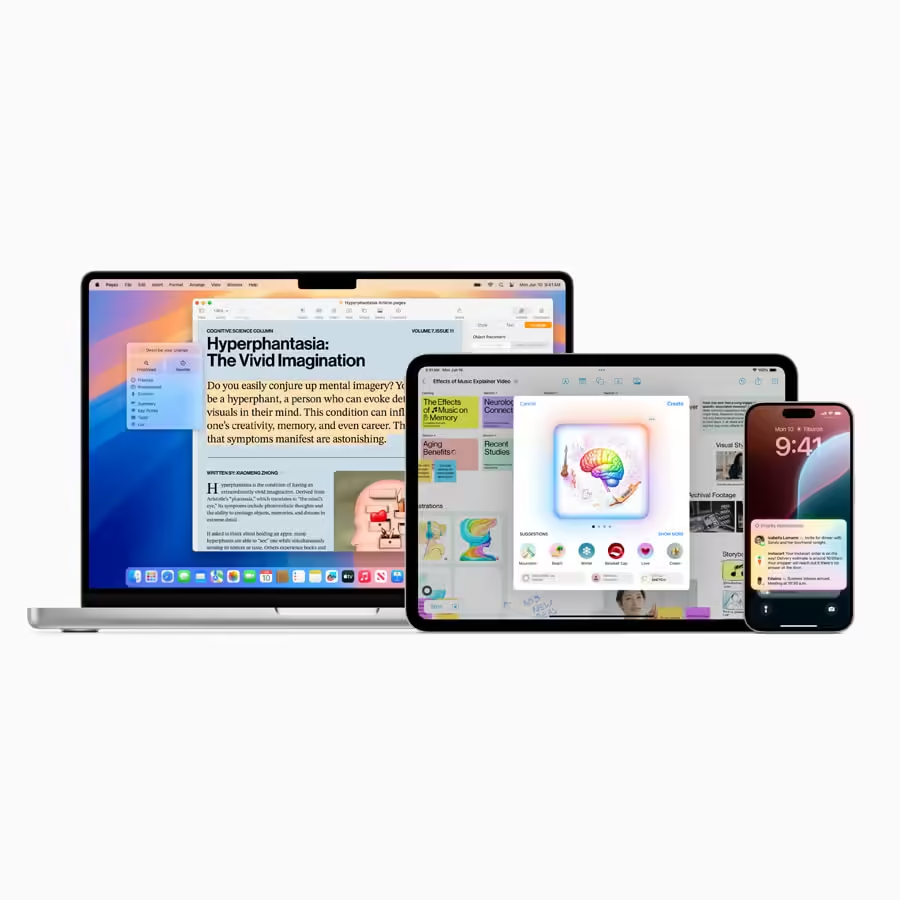The Unstoppable Rise of AI-Generated Content: Revolutionizing Creation, Marketing, and Beyond
Estimated reading time: 9 minutes
Key Takeaways
- Rapid Adoption: AI tools are surging in popularity, with 65% of businesses already using them for content tasks, and projected growth of 200% by 2025.
- Core Strengths: AI excels at scalability (mass production), speed (rapid drafting/editing), and adaptability (personalization), making it a potentially ‘unstoppable’ force in content creation.
- Broad Impact: AI is transforming text generation (blogs, copy), video editing (auto-captions, effects), and marketing (chatbots, predictive analytics, personalized ads).
- Efficiency Gains: Businesses report significant time savings (e.g., 60% reduction in brainstorming time) and potential for tripled ROI on content campaigns.
- Ethical Hurdles: Concerns around authenticity, bias replication, plagiarism, and potential job displacement require careful management, including human oversight and transparency.
- Hybrid Future: The most effective approach often involves blending AI’s efficiency with human creativity, strategy, and ethical judgment, as 83% of consumers prefer this combination.
Table of Contents
- The Unstoppable Rise of AI-Generated Content: Revolutionizing Creation, Marketing, and Beyond
- Key Takeaways
- Introduction: AI is Reshaping Our World
- Understanding AI-Generated Content: Scalability, Speed, and Ethics
- AI in Content Creation: Tools and Innovations
- AI-Powered Blogging: Efficiency Meets Creativity
- AI in Video Editing: Redefining Visual Storytelling
- AI-Driven Content Marketing: Precision and Personalization
- Benefits of Unstoppable AI-Generated Content
- Challenges and Ethical Considerations
- Future Trends in AI Content Generation
- Frequently Asked Questions
Introduction: AI is Reshaping Our World
Artificial intelligence isn’t just a futuristic concept anymore; it’s actively reshaping how we create, market, and consume content—and this transformation is accelerating at a breakneck pace. Think about how quickly chatbots improved, how realistic AI images became, or how easily videos can now be edited with smart tools. This isn’t a gradual shift; it’s a paradigm disruption.
The numbers tell a compelling story. According to recent data from Microsoft, a staggering 65% of businesses now use AI tools for content tasks. This includes everything from drafting initial blog posts and email campaigns to komplex video editing and social media scheduling. Even more striking is the projection that this already high adoption rate is expected to grow by another 200% by 2025. This highlights the immense momentum behind AI in the content sphere.
Financial institutions like Morgan Stanley echo this sentiment, emphasizing that AI’s core attributes—its unmatched scalability, incredible speed, and remarkable adaptability—position it as an “unstoppable” force in the modern economy. For brands, this translates into the power to produce highly personalized content tailored to individual user preferences, and to do so at volumes previously unimaginable. Imagine crafting unique marketing messages for thousands of customer segments simultaneously – that’s the potential AI unlocks.


This blog post aims to dive deep into the multifaceted world of unstoppable AI-generated content. We’ll explore how it’s revolutionizing various industries, focusing particularly on innovations in text generation, video production, and marketing strategies. However, we won’t shy away from the significant challenges and ethical questions that accompany this powerful technology. Join us as we navigate the hype and reality of AI in content creation.
Understanding AI-Generated Content: Scalability, Speed, and Ethics
At its core, unstoppable AI-generated content refers to any form of creative output – text, images, audio, video, code – produced by artificial intelligence systems. These systems often rely on sophisticated models like large language models (LLMs) such as GPT-4 for text, or multimodal tools capable of understanding and generating different types of media.
The rapid, almost viral growth of these tools stems primarily from three defining characteristics:
- Scalability: This is perhaps AI’s most disruptive advantage. Where a human team might take weeks to produce a dozen articles, AI can potentially generate thousands of articles, social media posts, ad variations, or even short video scripts in a matter of minutes or hours. This allows businesses to saturate channels or test variations on a massive scale.
- Speed: The efficiency gains are undeniable. AI tools can draft blog posts, summarize long reports, write code snippets, or perform basic video edits roughly 10 times faster than traditional manual methods. This frees up human creators from tedious, repetitive tasks, allowing them to focus on higher-level strategy, creativity, and refinement.
- Adaptability: Modern AI can tailor content instantly. Given the right prompts and data, it can adjust tone, style, complexity, and focus for different target audiences, platforms, or marketing goals. Need a formal report summary and a casual social media blurb about the same topic? AI can generate both almost simultaneously.
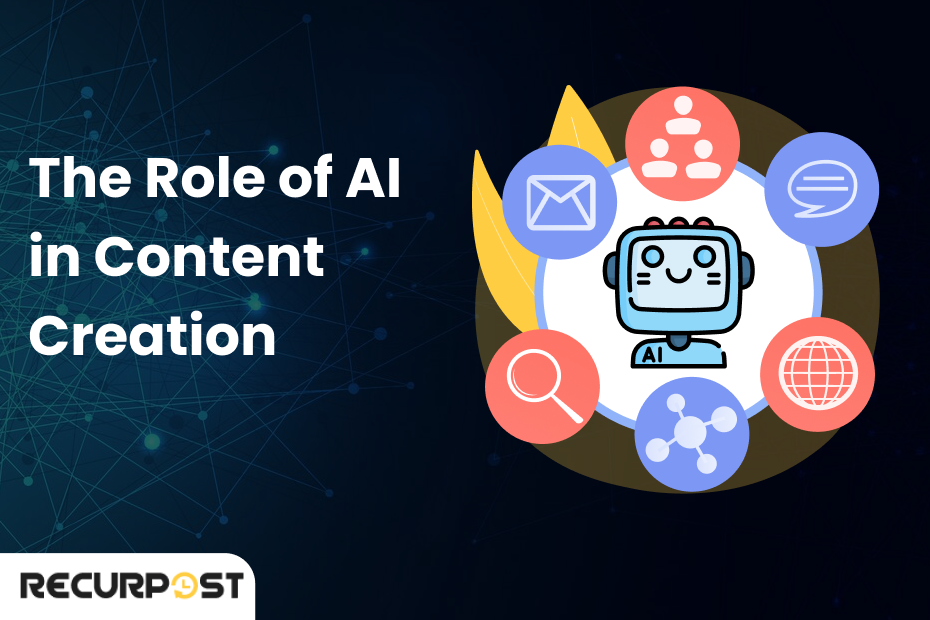

Consider the marketing domain. Adobe’s research provides concrete evidence of this trend, revealing that 74% of marketers are now leveraging AI tools specifically to scale their content creation efforts across diverse platforms, from dynamic email campaigns to personalized social media feeds.
However, this powerful technology is not without its ethical complexities and potential downsides. Several concerns consistently surface:
- Authenticity: Can audiences truly connect with or trust content that wasn’t created by a human? Does AI-generated content lack the nuances, empathy, or genuine voice that builds rapport?
- Bias: AI models learn from vast datasets, which often contain inherent societal biases. There’s a significant risk that AI tools will perpetuate or even amplify harmful stereotypes related to race, gender, or other characteristics if not carefully monitored and mitigated.
- Originality and Plagiarism: Sophisticated models like GPT-4 are trained on enormous amounts of existing text and data. While they aim to generate novel content, there’s always a risk of unintentional plagiarism or generating outputs that are too similar to existing works, leading to legal and ethical issues.
- Misinformation: AI can generate highly plausible but factually incorrect information (“hallucinations”). If used without verification, this can rapidly spread misinformation at scale.
Addressing these challenges is crucial for responsible AI adoption. Experts, such as those at WordStream, strongly advise brands to implement rigorous processes to audit AI outputs for accuracy, bias, and originality, and critically, to maintain human oversight throughout the content lifecycle. Human judgment remains essential for fact-checking, ensuring ethical alignment, and adding genuine creative flair. For those seeking a deeper understanding of navigating these complexities, resources like Explosive AI Fairness & Ethics: Critical Strategies to Eliminate Bias and Ensure Transparent Accountability offer valuable insights.
AI in Content Creation: Tools and Innovations
The landscape of AI in content creation is vibrant and constantly evolving, with powerful tools emerging that significantly streamline and enhance creative workflows. Platforms like OpenAI’s GPT-4, Jasper (formerly Jarvis), and Copy.ai have become linchpins for creators and marketers alike.
Key Tools and Their Uses
- GPT-4 & Similar LLMs (e.g., Claude, Gemini): These foundational models excel at generating diverse text formats. Common uses include:
- Drafting entire blog posts or articles based on outlines or prompts.
- Creating engaging social media captions tailored for different platforms (LinkedIn, Twitter, Instagram).
- Writing compelling product descriptions for e-commerce sites.
- Summarizing long documents or transcripts.
- Brainstorming ideas and headlines.
- Jasper: This platform is specifically tuned for marketing and sales copy. It focuses on:
- Crafting persuasive marketing copy (ads, landing pages, email sequences) that aligns closely with a specified brand voice and tone.
- Generating content frameworks like AIDA (Attention, Interest, Desire, Action) or PAS (Problem, Agitate, Solve).
- Integrating with SEO tools to optimize copy for search engines.
- Copy.ai: Similar to Jasper, Copy.ai offers a suite of tools for marketing and sales, particularly strong in:
- Optimizing email marketing campaigns, including subject lines and body copy.
- Generating high-converting copy for landing pages and websites.
- Creating variations of ad copy for A/B testing.
- Multimodal Tools (e.g., Midjourney, DALL-E 3, Runway Gen-2): These tools bridge text, image, and video generation, enabling users to create visuals from descriptions or generate short video clips based on prompts or existing images.
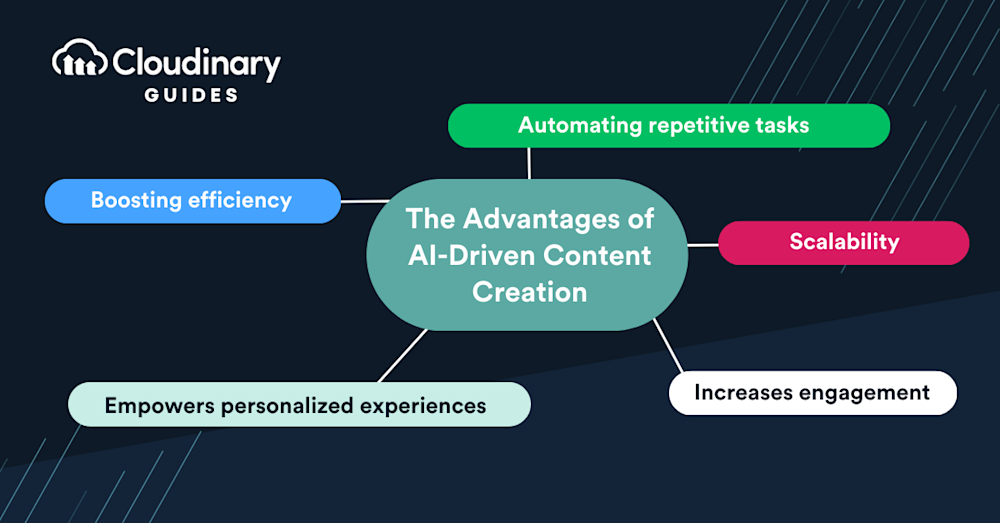

Benefits of AI Content Tools
The advantages of integrating these tools are tangible:
- Rapid Ideation and Reduced Creative Blocks: Staring at a blank page? AI can instantly generate dozens of ideas, headlines, or opening paragraphs, breaking through creative blocks. Hootsuite data indicates that teams using AI tools effectively cut their brainstorming time by an average of 60%.
- Enhanced SEO Optimization: Many AI writing tools now integrate directly with SEO platforms like SurferSEO or Frase. This allows creators to generate drafts that are already informed by keyword research, competitor analysis, and optimal content structures, significantly improving the chances of ranking well in search results.
- Improved Brand Consistency: Maintaining a consistent brand voice and tone across potentially hundreds or thousands of content pieces can be challenging. AI tools can be trained or prompted to adhere strictly to brand guidelines. DesignRush notes that AI tools can effectively mirror a company’s specific tone across over 100 pieces of content monthly, ensuring uniformity.
- Content Repurposing at Scale: AI can quickly adapt existing content for different formats. A long blog post can be transformed into a series of tweets, a short video script, an email newsletter segment, or a presentation outline with minimal effort.
Case Study: SaaS Productivity Boost
Consider a mid-sized SaaS company struggling to maintain a consistent blogging schedule due to limited writing resources. By integrating GPT-4 into their workflow, they began using the AI to generate initial drafts based on detailed outlines provided by subject matter experts. Their human writers then took these drafts, fact-checked them, added unique insights, incorporated data-driven analysis, and refined the tone. The result? They successfully reduced their end-to-end blog production time by 50%. This freed up their writers to focus on more strategic tasks like in-depth research, customer interviews, and developing thought leadership pieces, ultimately improving content quality while increasing output.
To explore further how AI can enhance daily work, consider exploring resources like 5 Innovative Ways to Use AI Strategies to Boost Productivity and Improve Daily Routine.
AI-Powered Blogging: Efficiency Meets Creativity
The realm of blogging, once solely the domain of human writers pouring hours into research, drafting, and optimization, is being dramatically reshaped by AI-powered blogging tools. Platforms integrating AI, such as specialized SEO content tools like SurferSEO and Frase, or standalone AI writers, automate many of the most time-consuming aspects of blog creation, empowering creators to channel their energy into higher-level creativity and strategic storytelling.
Instead of replacing human bloggers, AI acts as a powerful assistant, handling grunt work and providing data-driven insights that were previously hard to obtain quickly.
How AI Enhances Blogging
- Automated Content Outlines & Briefs: Many AI tools can analyze top-ranking articles for a target keyword and instantly generate comprehensive content briefs or outlines. These often include suggested headings (H2s, H3s), key topics to cover, relevant entities (important related terms), and even word count recommendations, providing a solid structure before writing begins.
- Accelerated Drafting: As mentioned earlier, AI can generate initial drafts based on an outline or prompt, significantly speeding up the writing process. While these drafts always require human editing and refinement, they provide a substantial starting point, overcoming the “blank page” hurdle.
- Real-Time SEO Scoring & Optimization: Integrated tools provide immediate feedback on content as it’s being written (or after drafting). This includes scoring for keyword density, readability (e.g., Flesch-Kincaid score), semantic relevance, heading structure, and image inclusion. This allows bloggers to optimize their content for search engines iteratively, rather than as an afterthought.
- Built-in Plagiarism Checks: Many AI writing platforms include integrated plagiarism detection tools. This helps ensure that the generated or edited content is original and avoids accidentally duplicating existing text from the web, safeguarding against SEO penalties and ethical breaches.
- Idea Generation & Topic Clustering: AI can analyze search trends, competitor content, and audience questions (e.g., from “People Also Ask” on Google) to suggest relevant blog topics and help group them into logical clusters, supporting a more strategic content calendar.


The impact on performance can be significant. Typeface.ai reported findings that blogs incorporating AI tools strategically saw an average 70% increase in organic traffic. This boost is often attributed to the combination of better keyword optimization, faster content publishing cadence (freshness is an SEO factor), and the ability to cover topics more comprehensively based on AI analysis.
For writers and marketers looking to maximize their efficiency beyond just blogging, exploring a broader range of AI tools can be beneficial. Resources like Unleash Explosive Productivity: 10 Game-Changing AI-Powered Productivity Apps You Absolutely Need in 2024 cover applications that can streamline various aspects of daily work.
AI in Video Editing: Redefining Visual Storytelling
Video content reigns supreme in engagement, but production has traditionally been complex, time-consuming, and expensive. The emergence of AI in video editing tools, such as Runway ML, Descript, Pictory, and Adobe Premiere Pro’s Sensei AI features, is democratizing video creation, making high-quality production accessible even to those without extensive technical skills or budgets.
These tools automate tedious tasks, introduce novel creative possibilities, and drastically cut down editing time, allowing creators to focus more on the narrative and visual impact.
Top Features of AI Video Tools
- Automated Transcription & Auto-Captioning: AI can transcribe spoken audio in videos with remarkable accuracy and generate synchronized subtitles (captions) almost instantly. Many tools support multiple languages, making global content distribution easier. Descript, for example, allows editing video by simply editing the text transcript.
- Intelligent Background Removal & Replacement: Forget complex greenscreen setups. AI tools can identify and remove backgrounds from video footage automatically, allowing users to replace them with solid colors, images, or even other video clips with just a few clicks.
- AI Voice Synthesis & Cloning (“Overdub”): Need to fix a misspoken word or add narration after filming? Tools like Descript offer “Overdub” features that can generate realistic speech in the user’s own voice (after initial training) or create entirely synthetic voiceovers from text. This is invaluable for corrections, dubbing, and creating voiceovers without recording equipment.
- Smart Scene Detection & Editing: AI can analyze footage to automatically detect scene changes, identify key moments, or even suggest edits based on pacing or content. Some tools can automatically create short highlight reels or social media clips from longer videos.
- Text-to-Video & Image-to-Video Generation: Emerging tools like Runway Gen-2 allow users to generate short video clips based on text descriptions or by animating still images, opening up entirely new avenues for visual content creation without cameras or complex animation software.
- Automated Color Correction & Grading: AI algorithms can analyze footage and suggest or automatically apply color corrections and stylistic grades to ensure visual consistency or achieve a specific mood.


The productivity gains are transforming workflows. One notable example involved a YouTuber specializing in tutorials who integrated Runway ML for tasks like background removal and auto-captioning. They reported doubling their weekly video output simply by automating editing processes that previously consumed hours of manual effort each day. This allowed them to expand their content library significantly faster, reaching a wider audience.
AI-Driven Content Marketing: Precision and Personalization
Beyond just creating content, AI is revolutionizing how that content is distributed, targeted, and measured. AI-driven content marketing leverages machine learning algorithms and vast data sets to deliver hyper-targeted campaigns with unprecedented precision and personalization, moving far beyond traditional demographic segmentation.
The goal is to deliver the *right* message to the *right* person on the *right* channel at the *right* time—and AI provides the tools to achieve this at scale.
AI Marketing Strategies
- Intelligent Chatbots & Conversational AI: Modern AI chatbots (powered by LLMs) go far beyond simple FAQs. They can handle complex customer service queries, qualify leads, provide personalized product recommendations, and guide users through sales funnels 24/7. Adobe estimates that advanced chatbots can autonomously handle up to 80% of routine customer interactions, freeing up human agents for more complex issues.
- Predictive Analytics for Content & Trends: AI algorithms can analyze historical performance data, competitor activities, search trends, social media sentiment, and market signals to predict which topics will resonate with specific audience segments or forecast emerging trends. This allows marketers to create proactive, timely content rather than reacting retrospectively.
- Hyper-Personalization & Dynamic Content Optimization (DCO): AI enables marketers to move beyond segmenting audiences by demographics towards genuine 1:1 personalization. DCO platforms automatically adjust ad creatives (headlines, images, calls-to-action) and website content in real-time based on individual user behavior, location, past purchases, and inferred interests.
- Programmatic Advertising Optimization: AI powers the algorithms behind programmatic ad buying, optimizing bids, targeting, and ad placements in real-time across vast ad networks to maximize ROI and reach the most relevant audiences efficiently.
- Lead Scoring & Prioritization: AI can analyze lead behavior (website visits, email opens, content downloads) and demographic/firmographic data to score leads based on their likelihood to convert, allowing sales teams to prioritize their outreach efforts effectively.
- Sentiment Analysis: AI tools can monitor social media, reviews, and customer feedback to gauge public sentiment towards a brand, product, or campaign, providing valuable insights for strategy adjustments.
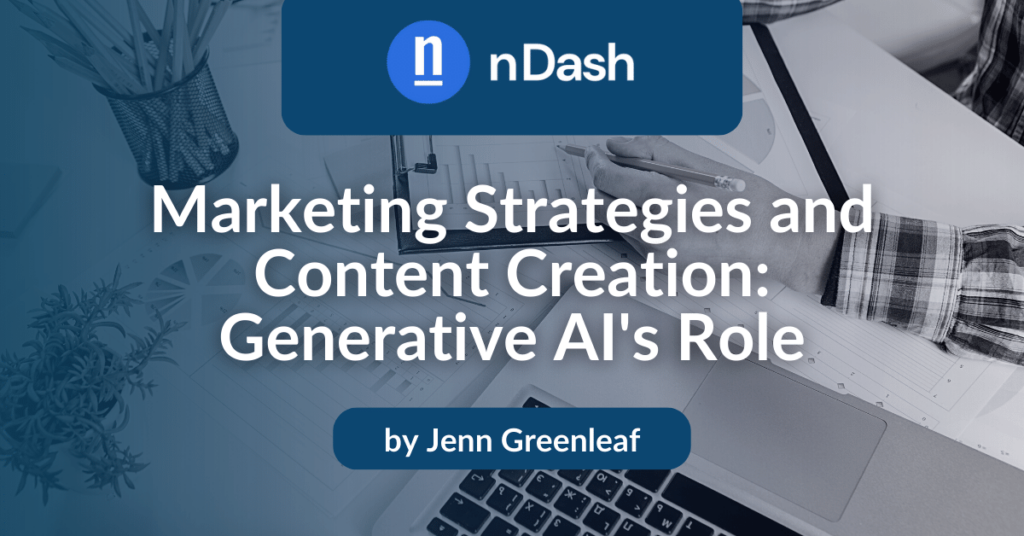

A classic, powerful example is Netflix. Their recommendation engine, heavily reliant on AI, analyzes vast amounts of individual watch history data, ratings, time of day viewing patterns, and even pause/rewind behavior. By using this data, their AI-curated previews and personalized content rows reportedly boosted viewer retention by a significant 35%. This demonstrates the immense power of AI in understanding user preferences and delivering tailored experiences that keep audiences engaged.
Marketers seeking to leverage these advanced capabilities can explore resources like Game-Changing AI Marketing Tools: Revolutionizing Digital Strategies, which delves into specific platforms and tactics.
Benefits of Unstoppable AI-Generated Content
The allure of the unstoppable AI-generated content wave isn’t just hype; it’s grounded in tangible, often transformative, benefits for businesses and creators willing to embrace it strategically. These advantages often compound, leading to significant improvements in efficiency, reach, and overall impact.
Here are four major advantages driving adoption:
- Unprecedented Scalability: As highlighted before, AI can produce content at a volume simply unattainable through manual effort alone. Need 50 variations of an ad for testing? A dozen blog posts on related topics? Hundreds of personalized email snippets? AI can deliver, potentially allowing businesses to produce 10x (or more) social posts, blogs, or video drafts compared to traditional methods.
- Significant Cost-Efficiency: While AI tools often have subscription costs, they can lead to substantial savings in labor, particularly for repetitive or high-volume content tasks. DesignRush suggests that strategic AI implementation can help reduce content production labor costs by up to 40%. This doesn’t necessarily mean replacing humans, but rather reallocating human effort to higher-value tasks that AI cannot perform, such as strategy, deep creativity, and relationship building.
- Continuous 24/7 Output: AI doesn’t sleep, take breaks, or go on vacation. Content generation, analysis, or moderation tasks can run continuously, enabling businesses to maintain a constant presence, respond instantly to customer queries via chatbots, or process data overnight. This ‘always-on’ capability is particularly valuable for global operations or time-sensitive marketing campaigns.
- Creative Augmentation & Focus Shift: By automating the mundane (like first drafts, transcriptions, basic edits), AI frees human creators from drudgery. This cognitive offloading allows writers, designers, and marketers to dedicate more time and mental energy to brainstorming big-picture ideas, developing unique angles, conducting deeper research, refining messaging, and focusing on overall strategy – areas where human insight remains paramount.


The financial implications are compelling. Morgan Stanley analysis indicates that effective AI adoption can potentially triple the ROI for content marketing campaigns. This stems from a combination of reduced production waste (less time spent on ineffective content), improved targeting accuracy (reaching more receptive audiences), and the ability to test and iterate far more rapidly than before.
Challenges and Ethical Considerations
Despite the immense potential and rapid advancements, the rise of unstoppable AI-generated content is undeniably accompanied by significant challenges and critical ethical considerations that must be proactively addressed. Ignoring these risks can lead to reputational damage, legal issues, and alienation of audiences.
Key Challenges
- Risk of Over-Reliance and Loss of Unique Voice: Leaning too heavily on AI for content creation can lead to generic, repetitive outputs that lack a distinct brand personality or unique perspective. Brands risk losing their unique voice and watering down their messaging if human creativity and strategic input are sidelined.
- Plagiarism and Copyright Risks: As AI models learn from existing data, there’s an inherent risk they might generate content that infringes on copyrights or is too similar to existing sources (unintentional plagiarism). Determining authorship and ownership of AI-generated content also presents legal complexities.
- The “Human Touch” and Emotional Gaps: AI, particularly in text generation, often struggles to replicate genuine human emotion, empathy, nuance, and cultural context effectively. Automated posts or interactions might feel impersonal, robotic, or lack the warmth needed to build strong audience connections.
- Accuracy and “Hallucinations”: AI models can confidently generate plausible-sounding but factually incorrect information. Relying on AI outputs without rigorous fact-checking can lead to the rapid spread of misinformation, damaging credibility.
- Bias Amplification: AI systems can inherit and amplify biases present in their training data, leading to outputs that perpetuate harmful stereotypes related to race, gender, age, or other characteristics. This requires ongoing vigilance and mitigation efforts.
- Job Displacement Concerns: While AI often augments human roles, there are valid concerns about its potential to displace workers in certain content creation fields, necessitating workforce adaptation and reskilling initiatives.
- Detection and Transparency: As AI content becomes more sophisticated, distinguishing it from human-created content becomes harder. This raises questions about transparency – should audiences always be informed when content is AI-generated?
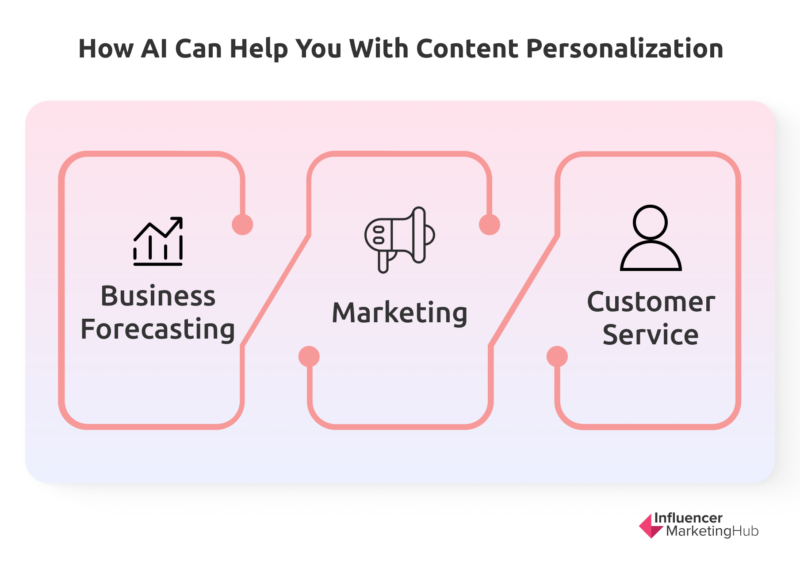

Solutions and Mitigation
Addressing these challenges requires a thoughtful, proactive approach:
- Implement Hybrid Workflows: The most effective strategy often involves using AI as a tool, not a replacement. Use AI for initial drafts, research assistance, data analysis, or automating repetitive tasks, but ensure humans handle final editing, fact-checking, strategic refinement, and adding the crucial brand voice and creative spark.
- Prioritize Transparency: Establish clear guidelines on when and how to disclose the use of AI in content creation. While not always necessary (e.g., for internal drafts), transparency builds trust, especially for content presented as authoritative or personal.
- Conduct Regular Bias Audits: Proactively test AI tools and outputs for potential biases. Use diverse teams for review and implement feedback loops to refine prompts and processes to minimize harmful stereotypes.
- Invest in Training and Guidelines: Equip your teams with the skills to use AI tools effectively and responsibly. Develop clear internal guidelines on ethical AI use, plagiarism checks, fact-checking procedures, and maintaining brand voice.
- Focus on Higher-Value Human Skills: Emphasize the skills AI cannot easily replicate: critical thinking, deep creativity, emotional intelligence, strategic planning, ethical judgment, and building relationships.


Ultimately, the market seems to favor a balanced approach. Adobe’s report highlights a crucial consumer sentiment: 83% of consumers state they prefer content that successfully blends AI’s efficiency with genuine human creativity and oversight. This underscores the importance of finding the right synergy between artificial intelligence and human ingenuity.
Future Trends in AI Content Generation
The unstoppable AI-generated content revolution is far from over; in many ways, it’s just getting started. The capabilities of AI models are improving exponentially, promising even more sophisticated and integrated applications in the near future. We can expect to see several key trends shaping the next wave of AI content:
- True Hyper-Personalization at Scale: Current personalization often relies on broad segments. Future AI will enable dynamic content generation tailored to micro-audiences or even individuals in real-time. Imagine marketing messages or website experiences crafted specifically for “moms in Chicago who practice yoga and own an electric vehicle,” adjusting automatically based on ongoing interactions.
- Advanced Multimodal Generation: AI will become increasingly adept at seamlessly working across different media formats. We’ll see tools that can generate a blog post, automatically create accompanying images or infographics, produce a short summary video with synthetic voiceover, and draft corresponding social media updates – all from a single initial prompt or set of instructions.
- Sophisticated Multilingual Capabilities: AI translation is already powerful, but future models will offer near-instant, highly nuanced translation and localization of content (including video dubbing and cultural adaptation) into dozens, potentially hundreds, of languages, breaking down global communication barriers for content creators.
- AI-Powered AR/VR Content Creation: As augmented and virtual reality technologies mature, AI will play a critical role in generating immersive content. This could range from quickly designing 3D models and environments for virtual events or training simulations to creating interactive AR experiences triggered by real-world objects.
- Enhanced Interactivity and Real-Time Updates: Content will become more dynamic. Imagine news articles that automatically update with the latest developments, or educational modules that adapt difficulty and content based on a user’s real-time performance and understanding. AI will enable content that learns and evolves.
- Improved Ethical Safeguards and Explainability: In response to current challenges, future AI development will likely place a stronger emphasis on building more robust safeguards against bias, ensuring greater content originality, and providing better “explainability” – allowing users to understand *why* an AI generated a specific output.


Projections reflect this accelerating integration. Typeface.ai, for instance, predicts that by 2027, as much as 60% of all marketing content could be AI-generated or AI-assisted, with a growing emphasis on interactivity and real-time personalization. This signifies a fundamental shift in content strategy and production workflows.
For a broader perspective on the technological advancements driving these changes, exploring resources like 10 Cutting Edge AI Technologies Shaping the Future can provide valuable context on the underlying innovations.
Frequently Asked Questions
1. Can AI completely replace human content creators?
While AI can automate many tasks involved in content creation (drafting, editing basics, data analysis, translation), it currently lacks the genuine creativity, strategic thinking, emotional intelligence, nuanced understanding, and ethical judgment that human creators provide. The most likely future involves AI augmenting human capabilities, handling repetitive tasks and providing insights, while humans focus on higher-level strategy, originality, empathy, and final quality control. A hybrid approach is generally considered optimal.
2. How can I ensure AI-generated content is original and avoids plagiarism?
This is a critical concern. Best practices include:
- Using AI primarily for brainstorming, outlining, and first drafts, followed by significant human rewriting and editing.
- Always running AI-generated text through reliable plagiarism detection software (many AI writing tools have this integrated, but independent checks are wise).
- Providing specific, unique inputs/prompts to the AI rather than generic requests.
- Fact-checking all claims and data points generated by AI.
- Focusing on adding unique human insights, analysis, or perspectives to any AI-assisted content.
3. What are the biggest ethical risks of using AI for content creation?
Key ethical risks include:
- Bias: AI perpetuating harmful stereotypes present in training data.
- Misinformation: AI generating plausible but false information (“hallucinations”).
- Authenticity/Transparency: Audiences being misled if AI use isn’t disclosed appropriately.
- Plagiarism/Copyright: AI infringing on existing intellectual property.
- Lack of Empathy: Content feeling robotic or insensitive in certain contexts.
Addressing these requires human oversight, bias audits, fact-checking, clear guidelines, and transparency.
4. Which AI tools are best for beginners in content creation?
For text generation, tools like ChatGPT (free version available), Jasper, and Copy.ai offer user-friendly interfaces and helpful templates for various content types (blogs, social media, emails). For basic video editing with AI features, Descript is known for its intuitive transcript-based editing, while platforms like Pictory are good for turning text into simple videos. Starting with specific, smaller tasks (e.g., drafting social posts, summarizing text) is often a good way to learn before tackling larger projects.
5. Will using AI negatively impact my website’s SEO?
Google’s stance is that they reward high-quality content, regardless of how it’s produced. Using AI itself isn’t penalized. However, relying *solely* on AI to mass-produce low-quality, unoriginal, or inaccurate content *can* negatively impact SEO, just like any poor content strategy. The key is to use AI as a tool to create helpful, reliable, people-first content that demonstrates expertise, experience, authoritativeness, and trustworthiness (E-E-A-T). High-quality, human-refined, AI-assisted content can perform very well in search results, especially when AI is used for optimization insights.






